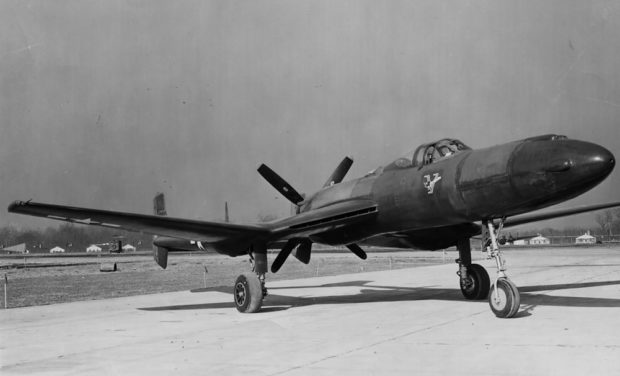For the US Army Air Force, Vultee XP-54 war machine was designed as a modern interceptor with excellent flight characteristics. Forward-firing weapons that are both powerful and accurate are designed to confidently eliminate targets at any range.
The experimental design keeps the ability to maneuver at high speeds. The XP-54 is an outstanding interceptor thanks to its great speed and other benefits of a heavy fighter.
Vultee submitted a proposal in response to a U.S. Army Air Corps request for an unusual configuration. The Vultee design won the competition, beating the Curtiss XP-55 Ascender and the Northrop XP-56 Black Bullet. Vultee designated it Model 84, a descendant of their earlier Model 78. After completing preliminary engineering and wind tunnel tests, a contract for a prototype was awarded on 8 January 1941. A second prototype was ordered on 17 March 1942. Although it appeared to be a radical design, performance was lackluster, and the project was cancelled.
https://youtu.be/-ZH7ygxEocw
The XP-54 was designed with a pusher engine in the aft part of the fuselage. The tail was mounted rearward between two mid-wing booms, with the twelve-foot propeller between them. The design included a “ducted wing section” developed by the NACA to potentially enable installation of cooling radiators and intercoolers in the inverted gull wing. The Pratt & Whitney X-1800 engine was proposed as the powerplant, but after its development was discontinued the liquid-cooled Lycoming XH-2470 was substituted.
In September 1941, the XP-54 mission was changed from low-altitude to high-altitude interception. Consequently, a turbo-supercharger and heavier armor was added, and empty weight increased to 18,000 lb (5,200 to 8,200 kg).
The Swoose Goose
The XP-54 was unique in numerous ways. The pressurized cockpit required a complex entry system: the pilot’s seat acted as an elevator for cockpit access from the ground. The pilot lowered the seat electrically, sat in it, and raised it into the cockpit.
Bail-out procedure was complicated by the pressurization system, necessitating a downward ejection of the pilot and seat to clear the propeller arc. Also, the nose section could pivot through the vertical, three degrees up and six degrees down.
In the nose, two 37 mm T-9 cannon were in rigid mounts while two .50 cal machine guns were in movable mounts. Movement of the nose and machine guns was controlled by a special compensating gun sight. Thus, the cannon trajectory could be elevated without altering the flight attitude of the airplane.
The large nose section gave rise to its whimsical nickname, the Swoose Goose, inspired by a song about Alexander who was half-swan and half-goose: “Alexander was a swoose.” – a name shared with the oldest surviving B-17.
Sources: YouTube; Wikipedia

